Table of contents
Abstract
SEEED Studio Xiao Round TFT Displays for eyes on a scary Halloween mask with raspberry pi camera and screaming witch sounds.
Project
I started this project as an upgrade to an older scary Halloween project with raspberry pi.
Halloween-of-Things (HoT) And Your Little Internet Too - Hackster.io
I got a new scary mask and some Seeed Studio XIAO round tft displays for eyes.
My plan was to use my old python code to sense a trick-or-treater with a proximity detector, then play a scary maniacal witch's laugh/scream with the raspberry pi and take a photo with the Rpi camera.
In addition, I would show some strange eyes on the tft displays for added effect.

I used two Seeed Studio XIAO nRF52840 processors with the tft displays.
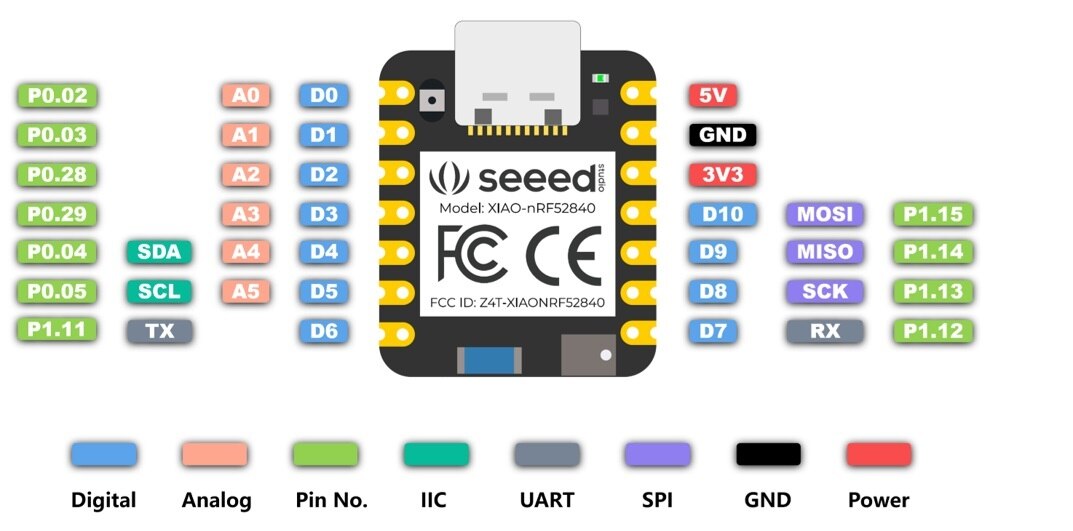
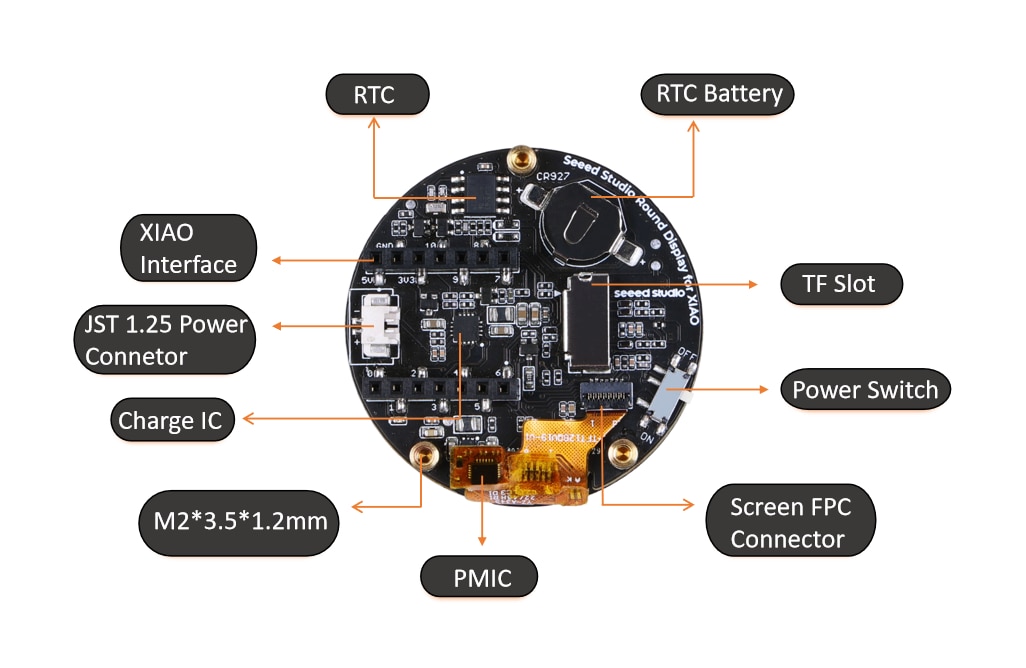
The image converter I used is:
I had to make a Left eye array file and a Right eye array file.

The XIAO program I used was a modified Arduino GUI example called TFT_flash_jpg.
// Renders images stored in an array in program (FLASH)
// The JPEG images are stored in header files (see jpeg1.h etc.)
// As well as the TFT_eSPI library:
// https://github.com/Bodmer/TFT_eSPI
// the sketch needs the JPEG Decoder library. This can be loaded via the Library Manager.
// or can be downloaded here:
// https://github.com/Bodmer/JPEGDecoder
//----------------------------------------------------------------------------------------------------
#define BOARD_SCREEN_COMBO 501
#include "driver.h"
#include <SPI.h>
#include <TFT_eSPI.h>
TFT_eSPI tft = TFT_eSPI();
// JPEG decoder library
#include <JPEGDecoder.h>
// Return the minimum of two values a and b
#define minimum(a,b) (((a) < (b)) ? (a) : (b))
// Include the sketch header file that contains the image stored as an array of bytes
// More than one image array could be stored in each header file.
#include "jpeg1.h"
// Count how many times the image is drawn for test purposes
uint32_t icount = 0;
//----------------------------------------------------------------------------------------------------
//####################################################################################################
// Setup
//####################################################################################################
void setup() {
Serial.begin(115200);
tft.begin();
}
//####################################################################################################
// Main loop
//####################################################################################################
void loop() {
tft.setRotation(1); // portrait
tft.fillScreen(TFT_RED);
drawArrayJpeg(ScaryEyeLeft, sizeof(ScaryEyeLeft), 0, 0); // Draw a jpeg image stored in memory at x,y
delay(2000);
}
//####################################################################################################
// Draw a JPEG on the TFT pulled from a program memory array
//####################################################################################################
void drawArrayJpeg(const uint8_t arrayname[], uint32_t array_size, int xpos, int ypos) {
int x = xpos;
int y = ypos;
JpegDec.decodeArray(arrayname, array_size);
jpegInfo(); // Print information from the JPEG file (could comment this line out)
renderJPEG(x, y);
Serial.println("#########################");
}
//####################################################################################################
// Draw a JPEG on the TFT, images will be cropped on the right/bottom sides if they do not fit
//####################################################################################################
// This function assumes xpos,ypos is a valid screen coordinate. For convenience images that do not
// fit totally on the screen are cropped to the nearest MCU size and may leave right/bottom borders.
void renderJPEG(int xpos, int ypos) {
// retrieve information about the image
uint16_t *pImg;
uint16_t mcu_w = JpegDec.MCUWidth;
uint16_t mcu_h = JpegDec.MCUHeight;
uint32_t max_x = JpegDec.width;
uint32_t max_y = JpegDec.height;
// Jpeg images are draw as a set of image block (tiles) called Minimum Coding Units (MCUs)
// Typically these MCUs are 16x16 pixel blocks
// Determine the width and height of the right and bottom edge image blocks
uint32_t min_w = minimum(mcu_w, max_x % mcu_w);
uint32_t min_h = minimum(mcu_h, max_y % mcu_h);
// save the current image block size
uint32_t win_w = mcu_w;
uint32_t win_h = mcu_h;
// record the current time so we can measure how long it takes to draw an image
uint32_t drawTime = millis();
// save the coordinate of the right and bottom edges to assist image cropping
// to the screen size
max_x += xpos;
max_y += ypos;
// read each MCU block until there are no more
while (JpegDec.readSwappedBytes()) {
// save a pointer to the image block
pImg = JpegDec.pImage ;
// calculate where the image block should be drawn on the screen
int mcu_x = JpegDec.MCUx * mcu_w + xpos; // Calculate coordinates of top left corner of current MCU
int mcu_y = JpegDec.MCUy * mcu_h + ypos;
// check if the image block size needs to be changed for the right edge
if (mcu_x + mcu_w <= max_x) win_w = mcu_w;
else win_w = min_w;
// check if the image block size needs to be changed for the bottom edge
if (mcu_y + mcu_h <= max_y) win_h = mcu_h;
else win_h = min_h;
// copy pixels into a contiguous block
if (win_w != mcu_w)
{
uint16_t *cImg;
int p = 0;
cImg = pImg + win_w;
for (int h = 1; h < win_h; h++)
{
p += mcu_w;
for (int w = 0; w < win_w; w++)
{
*cImg = *(pImg + w + p);
cImg++;
}
}
}
// draw image MCU block only if it will fit on the screen
if (( mcu_x + win_w ) <= tft.width() && ( mcu_y + win_h ) <= tft.height())
{
tft.pushRect(mcu_x, mcu_y, win_w, win_h, pImg);
}
else if ( (mcu_y + win_h) >= tft.height()) JpegDec.abort(); // Image has run off bottom of screen so abort decoding
}
// calculate how long it took to draw the image
drawTime = millis() - drawTime;
// print the results to the serial port
Serial.print(F( "Total render time was : ")); Serial.print(drawTime); Serial.println(F(" ms"));
Serial.println(F(""));
}
//####################################################################################################
// Print image information to the serial port (optional)
//####################################################################################################
void jpegInfo() {
Serial.println(F("==============="));
Serial.println(F("JPEG image info"));
Serial.println(F("==============="));
Serial.print(F( "Width :")); Serial.println(JpegDec.width);
Serial.print(F( "Height :")); Serial.println(JpegDec.height);
Serial.print(F( "Components :")); Serial.println(JpegDec.comps);
Serial.print(F( "MCU / row :")); Serial.println(JpegDec.MCUSPerRow);
Serial.print(F( "MCU / col :")); Serial.println(JpegDec.MCUSPerCol);
Serial.print(F( "Scan type :")); Serial.println(JpegDec.scanType);
Serial.print(F( "MCU width :")); Serial.println(JpegDec.MCUWidth);
Serial.print(F( "MCU height :")); Serial.println(JpegDec.MCUHeight);
Serial.println(F("==============="));
}
//####################################################################################################
// Show the execution time (optional)
//####################################################################################################
// WARNING: for UNO/AVR legacy reasons printing text to the screen with the Mega might not work for
// sketch sizes greater than ~70KBytes because 16-bit address pointers are used in some libraries.
// The Due will work fine with the HX8357_Due library.
void showTime(uint32_t msTime) {
//tft.setCursor(0, 0);
//tft.setTextFont(1);
//tft.setTextSize(2);
//tft.setTextColor(TFT_WHITE, TFT_BLACK);
//tft.print(F(" JPEG drawn in "));
//tft.print(msTime);
//tft.println(F(" ms "));
Serial.print(F(" JPEG drawn in "));
Serial.print(msTime);
Serial.println(F(" ms "));
}
The motion sensor was part of a night light available at the local hardware store.
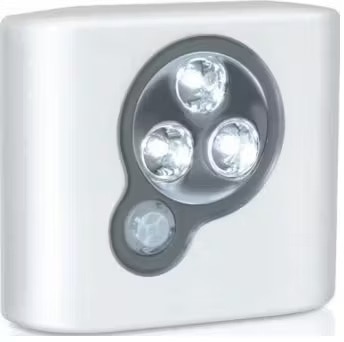
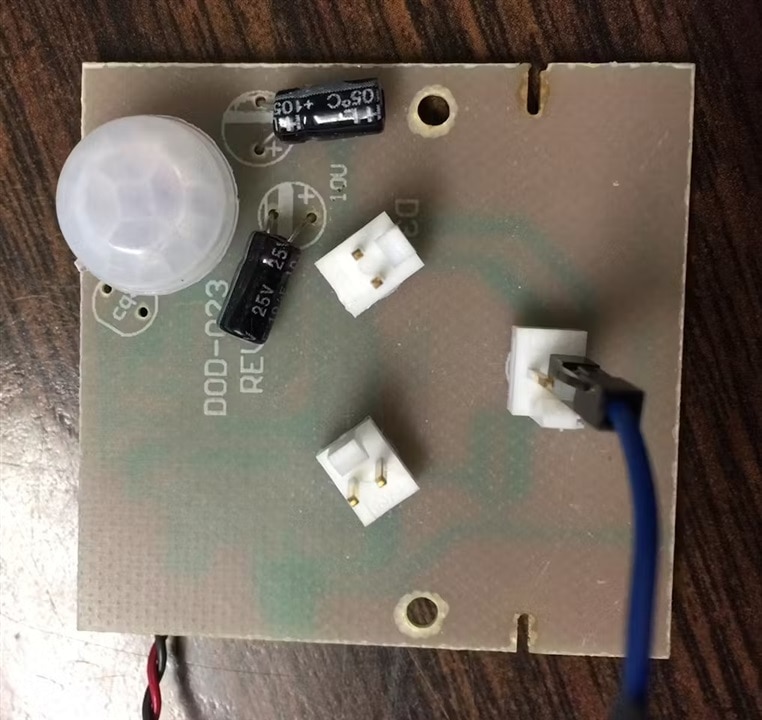
I powered the motion detector circuit from the 3.3V from the Rpi and used one of the LED outputs as a GPIO trigger input.
Last time I used the other LED outputs as eyes for the mask.
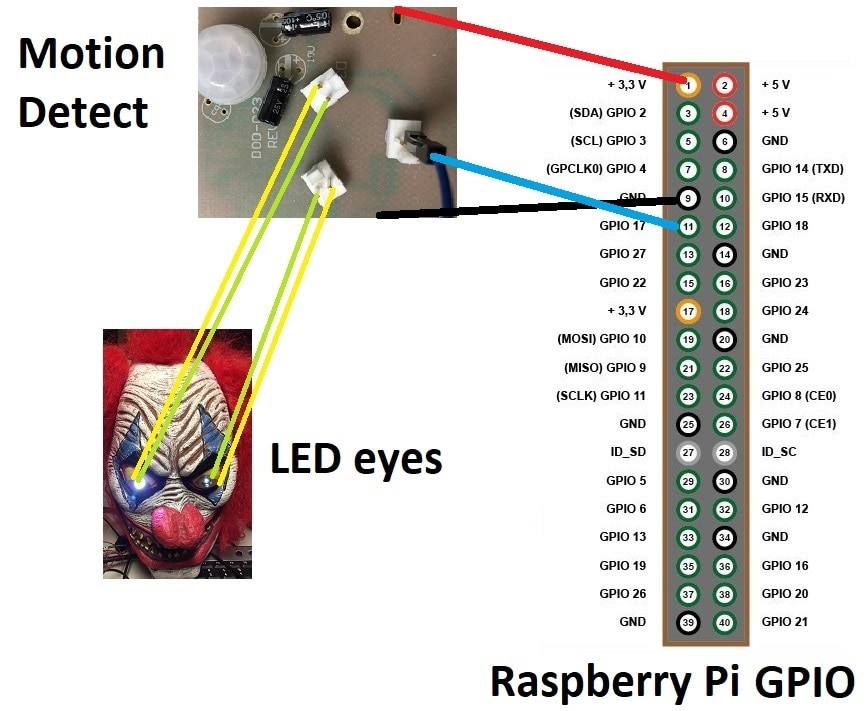
The old code didn't work of course on a Rpi5, so I had to change some things. The Gmail server won't allow unsecure posts, so I had to remove that code.
import RPi.GPIO as GPIO
import time
import os
import pygame
from shutil import copyfile
IRinputPin = 17
GPIO.setmode(GPIO.BCM)
GPIO.setup(IRinputPin,GPIO.IN, pull_up_down=GPIO.PUD_UP)
count = 10
pygame.mixer.init()
pygame.mixer.music.load("/home/pi/Music/Witch.mp3")
print('System Reset')
while (count>0):
print(count)
count-=1
time.sleep(1)
print('System Armed')
while True:
print('Waiting for input')
if (GPIO.input(IRinputPin)):
time.sleep(1)
else:
print('IR input detected')
os.system("fswebcam -r 960x720 -d /dev/video0 /home/pi/webcam.jpg")
timestr = time.strftime("%Y%m%d-%H%M%S")
filename2 = ('/home/pi/'+timestr+'.jpg')
copyfile('/home/pi/webcam.jpg', filename2)
print('Saving Picture')
os.system("python /home/pi/sendnotify.py")
print('Sending email')
pygame.mixer.music.play()
print('Resetting System')
count = 30
while (count>0):
print(count)
count-=1
time.sleep(1)
print('System Armed')
The camera OS commands no longer worked also, so I had to change that code also.
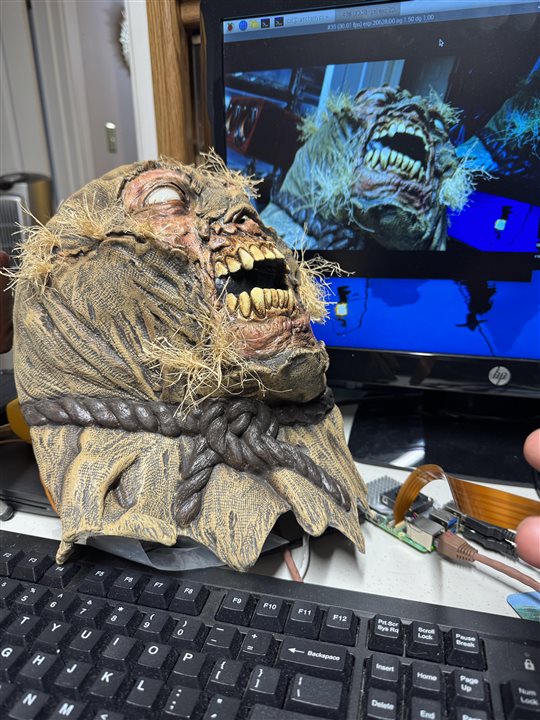
Here's the new code without any email notification.
import RPi.GPIO as GPIO
import time
import os
import pygame
from shutil import copyfile
IRinputPin = 17
GPIO.setmode(GPIO.BCM)
GPIO.setup(IRinputPin,GPIO.IN, pull_up_down=GPIO.PUD_UP)
count = 10
pygame.mixer.init()
pygame.mixer.music.load("/home/rpi5/Music/Witch.mp3")
print('System Reset')
while (count>0):
print(count)
count-=1
time.sleep(1)
print('System Armed')
while True:
print('Waiting for input')
if (GPIO.input(IRinputPin)):
time.sleep(1)
else:
print('IR input detected')
pygame.mixer.music.play()
os.system("rpicam-still -o /home/rpi5/capt.jpg")
timestr = time.strftime("%Y%m%d-%H%M%S")
filename2 = ('/home/rpi5/'+timestr+'.jpg')
copyfile('/home/rpi5/capt.jpg', filename2)
print('Saving Picture')
print('Resetting System')
count = 10
while (count>0):
print(count)
count-=1
time.sleep(1)
print('System Armed')
Here's the scarry witch laugh I found on the net.
We had a great Halloween!
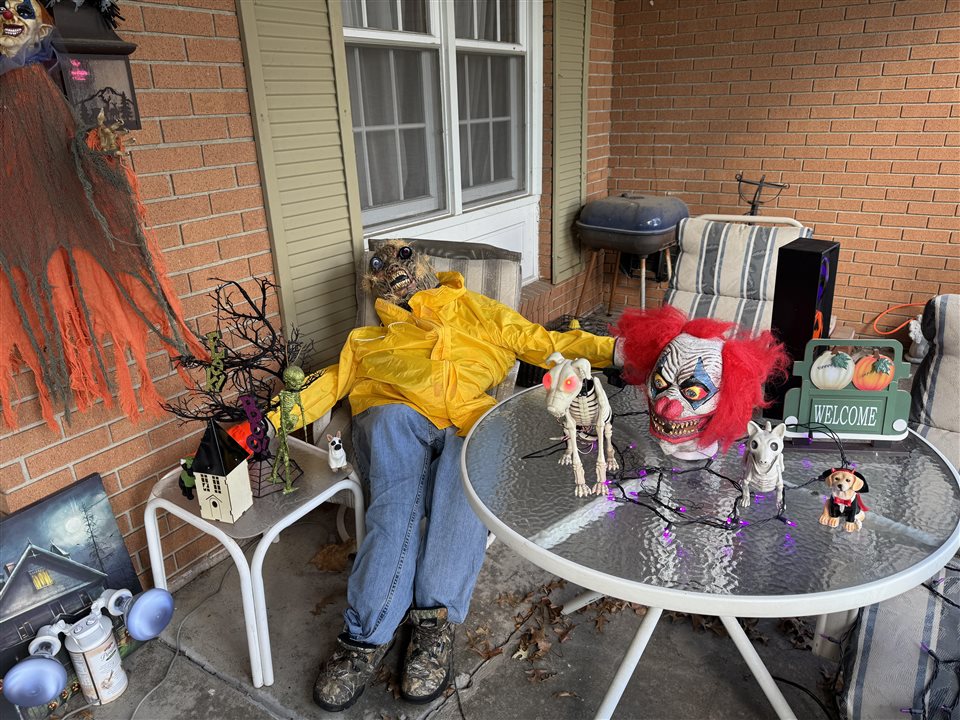
Enjoy!
References
Take A Look At These Gorgeous And Scary Eyes!
Getting Started with Seeed Studio Round Display for XIAO | Seeed Studio Wiki
Getting Started with Seeed Studio XIAO nRF52840 Series | Seeed Studio Wiki

